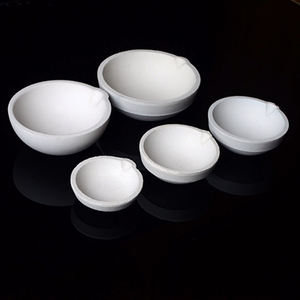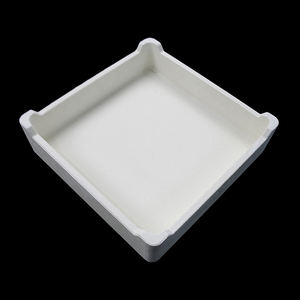Professional industry ceramic supplier, silicon nitride, silicon carbide, aluminum nitride and any other kinds of ceramics.
PRODUCT PARAMETERS
Description
Overview of Ceramic Ball Mill Machine Widely Used in Gold Ore Copper Ore Granite Iron Ore Coal Cement Limestone Bauxite Basalt Quartz
Ceramic Ball Mill Machine Widely Used in Gold Ore Copper Ore Granite Iron Ore Coal Cement Limestone Bauxite Basalt Quartz are a unique class of materials manufactured by fusing high-purity quartz crystal into a non-crystalline, vitrified form. This process results in a ceramic with an exceptionally low and predictable thermal expansion coefficient, making it supremely resistant to thermal shock. Its outstanding optical, thermal, and electrical properties make it indispensable in high-temperature viewing windows, semiconductor processing, precision instrumentation, and aerospace applications.
Features of Ceramic Ball Mill Machine Widely Used in Gold Ore Copper Ore Granite Iron Ore Coal Cement Limestone Bauxite Basalt Quartz
-
Exceptional Thermal Shock Resistance: Its near-zero thermal expansion coefficient allows it to withstand extreme and rapid temperature changes without cracking.
-
High Purity & Chemical Stability: Excellent resistance to corrosion from acids and molten metals, ensuring performance in aggressive environments.
-
High Service Temperature: Can be used continuously at high temperatures while maintaining its structural integrity.
-
Excellent Optical Properties: Offers high transmission from the ultraviolet to the infrared spectrum, ideal for lenses, windows, and optical substrates.
-
Low Thermal Conductivity: Provides effective thermal insulation.
-
Superior Electrical Insulation: Maintains high electrical resistivity and low dielectric loss at elevated temperatures.
Specifications of Ceramic Ball Mill Machine Widely Used in Gold Ore Copper Ore Granite Iron Ore Coal Cement Limestone Bauxite Basalt Quartz
This ceramic ball mill machine grinds many materials. It works well for gold ore, copper ore, granite, iron ore, coal, cement, limestone, bauxite, basalt, quartz. The machine uses ceramic linings inside. Ceramic is very hard. Ceramic resists wear much better than steel. This means the lining lasts longer. It also keeps the ground material pure. No metal scraps get mixed in. That’s important for many industries.
The ball mill has a strong steel shell. The ceramic linings protect it. The machine uses special grinding balls. These balls are also made of ceramic. They are very tough. They tumble inside the rotating drum. They crush and grind the material fed into the drum. The rotation speed is adjustable. You control the grinding fineness this way. Faster speed gives finer powder. Slower speed gives coarser output.
Different sizes are available. You choose based on your needs. Small models suit labs. Large models handle big production volumes. Capacities range from small batches to many tons per hour. The drive system uses a strong electric motor. A gearbox reduces the motor speed. This provides the right turning force. The drum turns smoothly on heavy bearings. The machine sits on a solid base frame. This keeps everything stable during operation.
This ball mill handles wet grinding and dry grinding. Water or other liquids can be added. Wet grinding often makes finer particles. The feed size matters. The machine crushes lumps down to sand. The output is fine powder. You control the particle size. The discharge end lets the ground material out. A screen holds the grinding balls inside. Only the fine powder passes through. Ceramic parts need less upkeep. They resist chemical attack. They handle acids and alkalis better than metal. This machine is reliable for continuous work. It processes hard, abrasive materials efficiently. It works in mining, cement making, ceramics production, chemical plants.
Applications of Ceramic Ball Mill Machine Widely Used in Gold Ore Copper Ore Granite Iron Ore Coal Cement Limestone Bauxite Basalt Quartz
Ceramic ball mill machines grind many materials finely. They handle tough jobs well. The inside uses special ceramic lining. This lining resists wear much longer than steel. It avoids rust problems too. Metal contamination is a big issue sometimes. Ceramic lining prevents this perfectly. Gold ore processing needs pure results. Copper ore benefits similarly. Granite grinding demands tough equipment. Iron ore reduction requires consistent particle size. This machine delivers reliable performance.
Coal powder preparation is another common use. Cement production relies on precise raw material grinding. Limestone must be ground uniformly for many products. Bauxite processing before alumina extraction uses these mills. Basalt grinding for construction materials happens here. Quartz sand production for glass or ceramics needs fine, clean powder. The ceramic lining keeps the quartz pure.
It works for dry grinding operations. It works for wet grinding processes too. Operators find it simple to run. Maintenance stays low because the ceramic parts last. The design focuses on efficient energy use. This saves money over time. Different materials need different grinding times. The machine allows easy adjustment of speed and duration. Safety features protect workers during operation. Dust control systems are often included. This creates a cleaner work area.
Many industries trust ceramic ball mills. Mining operations use them constantly. Chemical plants rely on their contamination-free grinding. Construction material producers need their durability. Ceramic manufacturers use them for raw material preparation. The machine handles abrasive substances without trouble. It provides consistent results batch after batch.
Company Profile
Tanki New Materials Co.Ltd. focus on the research and development, production and sales of ceramic products, serving the electronics, ceramics, chemical and other industries. Since its establishment in 2015, the company has been committed to providing customers with the best products and services, and has become a leader in the industry through continuous technological innovation and strict quality management.
Our products includes but not limited to Aerogel, Aluminum Nitride, Aluminum Oxide, Boron Carbide, Boron Nitride, Ceramic Crucible, Ceramic Fiber, Quartz Product, Refractory Material, Silicon Carbide, Silicon Nitride, ect. please feel free to contact us.

Payment Methods
T/T, Western Union, Paypal, Credit Card etc.
Shipment Methods
By air, by sea, by express, as customers request.
5 FAQs of Ceramic Ball Mill Machine Widely Used in Gold Ore Copper Ore Granite Iron Ore Coal Cement Limestone Bauxite Basalt Quartz
Ceramic Ball Mill Machine: Your Top 5 Questions Answered
What minerals does this ceramic ball mill grind well?
This ball mill handles many minerals perfectly. It grinds gold ore, copper ore, granite, iron ore, coal, cement, limestone, bauxite, basalt, and quartz efficiently. The ceramic lining makes it versatile for different materials.
Why choose a ceramic ball mill over other types?
Ceramic linings prevent metal contamination. This is vital for purity in gold or copper processing. Ceramic also resists wear better than steel. It lasts longer grinding hard materials like granite or quartz.
How does the ceramic ball mill actually work?
You feed raw material into the rotating drum. Ceramic grinding balls inside tumble and crush the ore. The grinding action reduces the material to fine powder. Continuous rotation ensures even grinding.
What’s the main benefit for processing like coal or cement?
It achieves a very fine, consistent particle size. Coal needs fine grinding for combustion. Cement needs uniform powder for quality. This machine delivers the required fineness reliably.
Is it tough enough for hard ores like iron or basalt?
Yes, absolutely. The ceramic lining and grinding balls are very hard. They withstand the impact grinding iron ore or basalt demands. The machine is built strong for heavy-duty operation.
REQUEST A QUOTE
RELATED PRODUCTS
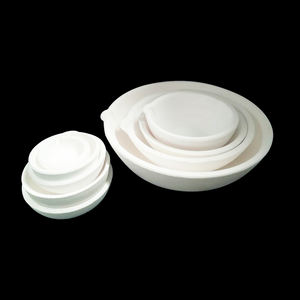
New Crack Series Artificial Calacatta Quartz Stone Slabs Whole Engineered Vanity Tops/Countertops/Table Tops High Quality
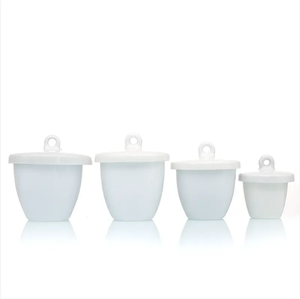
Factory Ready Stock Cuarzo Fused Silica Laboratory glassware Quartz 90mm Round Bottom Bowl Quartz Evaporating Dish

Lab Melting Used Fused Silica Quartz Sio2 Ceramic Crucible

Portable Granite Marble Quartz Stone Ceramic Porcelain Tile Cutting Machine Stone Cutting Machine
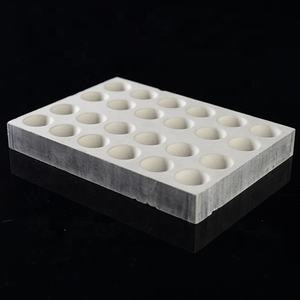
Quartz Melting Dishes Ceramic Bowl for Melting Platinum,melting Crucible,smelting Crucible
